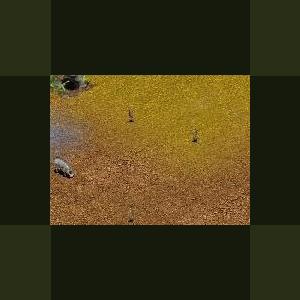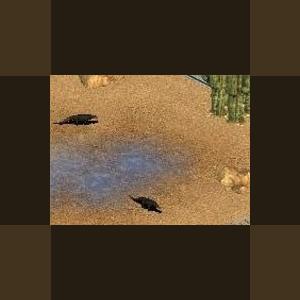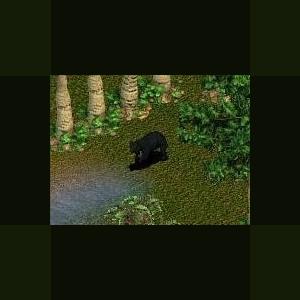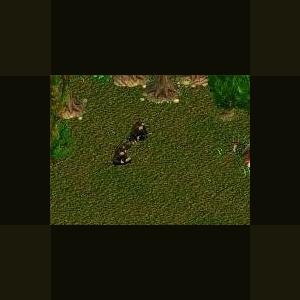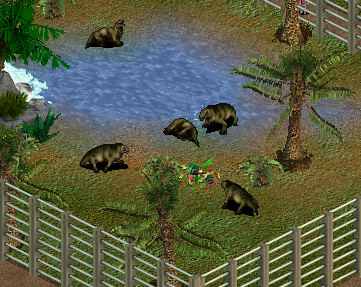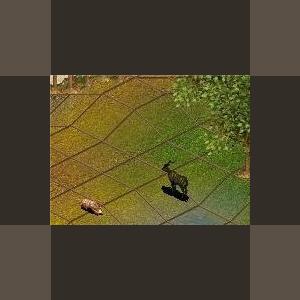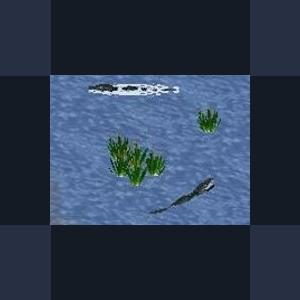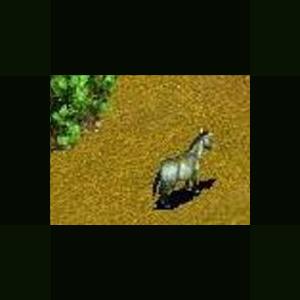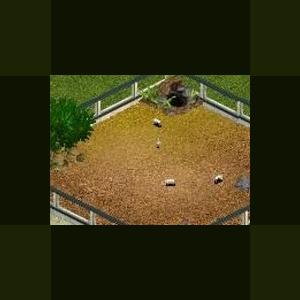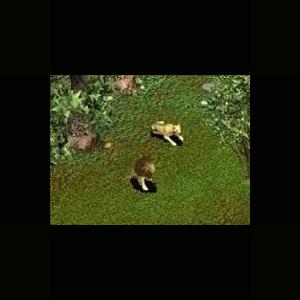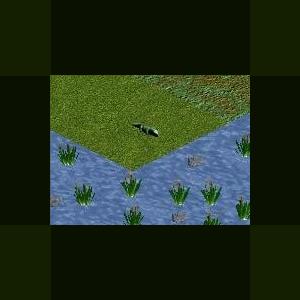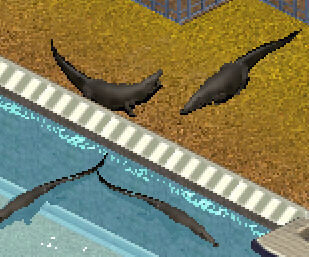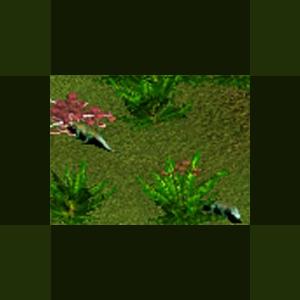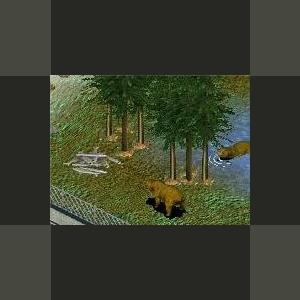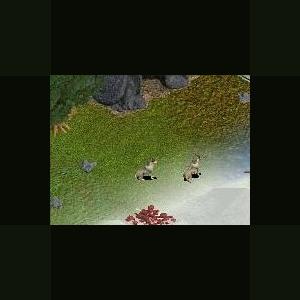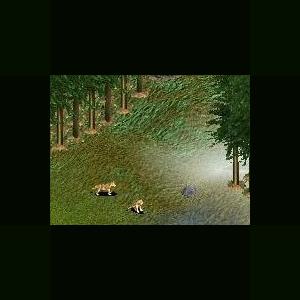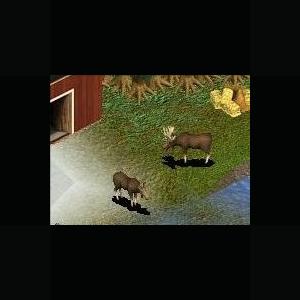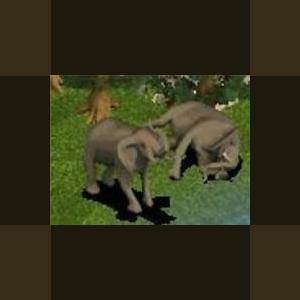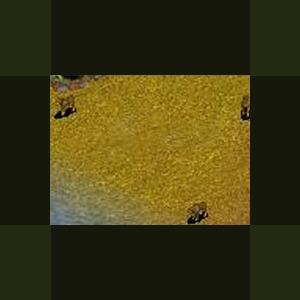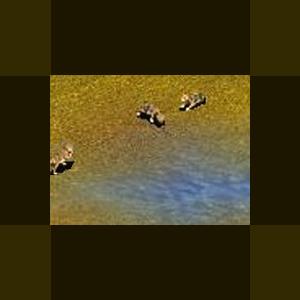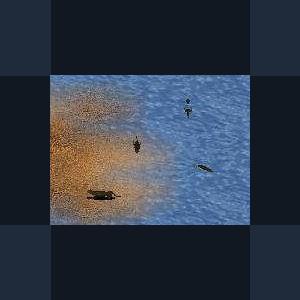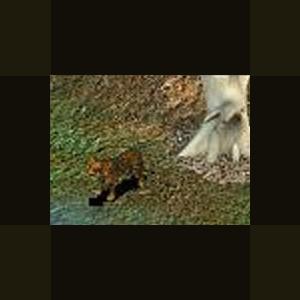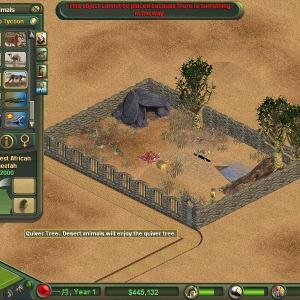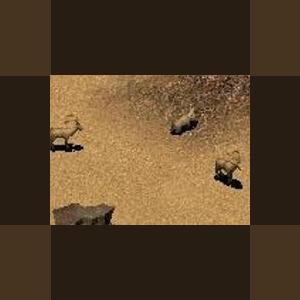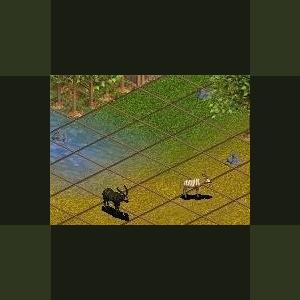280 files
-
Meerkat by Jordan
By Guest
The meerkat is a small animal in the mongoose family that lives in large groups on the African savannah.
Updated 2010-11-03
Just to save space with less in zip and smaller image.
Nothing new.
888 downloads
0 comments
Updated
-
Mexican Beaded Lizard by Jordan
By Guest
The Mexican Beaded Lizard is a venomous reptile found in the deserts of Mexico and the southwestern USA.
Updated 2010-11-03
Just to save space with less in zip and smaller image.
Nothing new.
482 downloads
0 comments
Updated
-
Milne by Ghirin
By Guest
The Milne is a large black bear from South America. It has been reported in the rainforests of Peru and Columbia. This bear may be a modern species of short-faced bear.
Updated 2010-11-03
Just to save space with less in zip and smaller image.
Nothing new.
185 downloads
0 comments
Updated
-
Morotopithecus Bishopi by Ghirin
By Guest
Morotopithecus bishopi by Ghirin
Morotopithecus bishopi was an early species of ape.
The fossils of this large-bodied ape were found in Miocene strata in Uganda. The fossils show some of the earliest indications of ape-like locomotion.
References:
http://www.johnhawks.net/weblog/fossils/apes/morotopithecus/
Updated 2010-11-03
Just to save space with less in zip and smaller image.
Nothing new.
295 downloads
0 comments
Updated
-
Moschops by P.Rex
By P.Rex
Moschops by P.Rex
Moschops belongs to Synapsida, a group of reptiles ancestral to mammals. It lived during the late Permian period in what is today South Africa. It is a heavily-built herbivore with a massive girth, allowing for fermentation of large amounts of plant matter. It feeds almost exclusively on soft plants, such as ferns, though it may be capable of carnivory in times of extreme famine. Moschops are very timid herbivores that prefer to avoid confrontation, usually fleeing at the first sight of danger.
This Moschops was adapted from the video game "Carnivores" by Action Forms.
709 downloads
Updated
-
Mountain Nyala by Jordan
By Guest
Mountain Nyala by Jordan
Mountain Nyala
Large antelope of east Africa.
Updated 2010-11-03
Just to save space with less in zip and smaller image.
Nothing new.
336 downloads
0 comments
Updated
-
Mugger Crocodile by Ghirin
By Guest
Mugger Crocodile
The mugger crocodile (Crocodylus palustris) is native to the Indian subcontinent and surrounding regions.
Its name, mugger, is derived from the local word for water monster.
References:
www.wikipedia.com
http://www.flmnh.ufl.edu/cnhc/csl.html
Updated 2010-11-03
Just to save space with less in zip and smaller image.
Nothing new.
359 downloads
0 comments
Updated
-
Mustang by Sundance
By Guest
Another wonderful horse by Sundance.
Updated 2010-11-03
Just to save space with less in zip and smaller image.
Nothing new.
225 downloads
0 comments
Updated
-
Naked Mole Rat by Jordan
By Guest
Naked Mole Rats are African rodents which live in burrows and can thrive in small exhibits.
Updated 2010-11-04
Just to save space with less in zip and smaller image.
Nothing new.
400 downloads
0 comments
Updated
-
Nemean Lion by Ghirin
By Guest
Nemean Lion
Author: Ghirin
The Nemean lion was a fierce creature that terrorized the people of Argolis in ancient Greece. It was the son of the monsters Typhon and Echidna and brother to the Theban Sphinx.
As his first Labor, Hercules had to kill the Nemean lion and bring the skin back to his cousin, the King of Mycenae. Hercules travelled to the Nemean plain in search of the great beast. At first, he tried to kill the lion with bronze-tipped arrows, but the arrows bounced off of the lion's tough hide. Realizing that regular weapons could not harm the lion, Hercules used his arms to strangle the lion to death. After killing the lion, the hero used the lion's own claws to skin the carcass. He returned to Mycenae with the skin, which became his trademark armor.
*Inspired by the Zoo Tycoon Brains Trust at the Zoo Tek Evolved Forums
Updated 2010-11-04
Just to save space with less in zip and smaller image.
Nothing new.
289 downloads
0 comments
Updated
-
Newtycoon the Newt by Jordan
By Guest
Newtycoon the Newt
Author: Jordan
Newtycoon the Newt or Tekkus juvenalis Newtensis
A strange little creature with a fixation on amphibians & a strange fear of magpies.It's notable for hanging around in ponds,but not distributing swords.After all,that's no basis for a system of government;supreme exec....sorry,I had a python,not a newt in mind for a minute.
One of the strangest things about this subspecies is that it not only replies to the calls of it's own species but to those of every other tek species.In great,& often interminable lenghth,peppering it's calls with german.Do not confuse it with the closely related species Angelfroggus & Seminariensis,which although they seem to be similar can be distuinguished by their relative silence compared to the newt variant.
Newtycoon the Newt was made by JordanMK, as an exclusive anniversary download for Tek Forums. (Thank you to Professor Paul for the interesting description of Newtycoon the Newt recopied above.)
Updated 2010-11-04
Just to save space with less in zip and smaller image.
Nothing new.
167 downloads
0 comments
Updated
-
Nile Crocodile
By Khaydar
Adopt a Nile Crocodile (Crocodylus niloticus) for your zoos.
Nile Crocodile description:
Minimum happiness needed for chance of breeding: 95.
Liked foliage:
Water Reed, Water Lily, Savannah Foliage
Liked rock:
Large Rock, Small Rock - Medium, Small Rock - Small
Number of animals allowed per exhibit: 2-3 with 20 squares each.
A suitable exhibit for 2 of this animal has 40 squares containing terrain of:
26 Fresh Water, 4 Dirt, 10 Savannah Grass
using 6 grid squares filled with 4 Water Lily most liked plant
and using 3 Small Rock - Small most liked rock.
Other liked items:
Tank Filter (MM)
Credits to Hendrix and Zerosvalmont
Made by Khaydar
269 downloads
- living animal
- crocodilian
- (and 1 more)
0 comments
Updated
-
Nile Monitor by Volksdragon
By Guest
Nile Monitor by Volksdragon
The Nile Monitor is a large, fast, and agile lizard from the rainforest outskirts and grasslands of Africa. As such, it likes rainforest foliage and rainforest terrain, but also likes a good amount of grass in its exhibit.
Updated 2010-11-04
Just to save space with less in zip and smaller image.
Nothing new.
642 downloads
Updated
-
Nordic Brown Bear by Jordan
By Guest
Made by Jordan and dedicated to Jane
Updated 2010-11-04
Just to save space with less in zip and smaller image.
Nothing new.
262 downloads
Updated
-
Nordic Gray Wolf by Jordan
By Guest
Nordic Gray Wolf by Jordan
Made by Jordan and dedicated to Jane.
Updated 2010-11-04
Just to save space with less in zip and smaller image.
Nothing new.
318 downloads
Updated
-
Nordic Lynx by Jordan
By Guest
Nordic Lynx by Jordan
Made by Jordan and dedicated to Jane
Updated 2010-11-04
Just to save space with less in zip and smaller image.
Nothing new.
484 downloads
Updated
-
Nordic Moose by Jordan
By Guest
Nordic Moose by Jordan
Made by Jordan and dedicated to Jane.
Updated 2010-11-04
Just to save space with less in zip and smaller image.
Nothing new.
258 downloads
Updated
-
North African Elephant by Ghirin
By Guest
North African Elephant
Author: Ghirin
http://www.zoo-tek.com/forums/index.php?download=626
The North African Elephant inhabited the area north of the Sahara Desert until about the 4th century A.D., when the animals were exterminated due to over hunting and loss of habitat. This is the elephant used by Hannibal during his attack on Rome. These elephants were also used by the Romans in the arena. These elephants are the same species as the Savannah Elephant, but adapted to the Mediterranean climate of northern Africa
Created by Ghirin 2003
Updated 2010-11-04
Just to save space with less in zip and smaller image.
Nothing new.
395 downloads
0 comments
Updated
-
North African Golden Jackal by Ghirin
By Guest
The golden jackal (Canis aureus) is widespread throughout northern Africa, central and southern Asia, and southern Europe. They prefer the more dry and arid portions of their ranges. The African golden jackal (Canis aureus algirensis) ranges across the northern portion of Africa and is the jackal represented by the Egyptian god Anubis.
Golden jackals live in small family groups composed of a mated pair and their offspring. Grown pups from previous years often stay with their parents for a time, helping to raise the younger members of the family. This extra help improves the survival rate of offspring.
The jackals dig dens or use ones made by other animals to serve as shelters for the family. Hunting usually takes place at night, but golden jackals are active during daylight hours in areas far from human activity. They prey on small mammals, birds, insects, and small reptiles. They will also feed on carrion and fruits.
References:
http://animaldiversity.ummz.umich.edu/accounts/canis/c._aureus$narrative.html
http://www.lioncrusher.com
http://www.bbc.co.uk/nature/wildfacts/factfiles/130.shtml
Walker’s Mammals of the World, Nowak, 1999.
Created by Ghirin 2003
Updated 2010-11-04
Just to save space with less in zip and smaller image.
Nothing new.
391 downloads
0 comments
Updated
-
North African Wildcat by Ghirin
By Guest
The wildcat (Felis sylvestris) is widespread throughout Africa and Eurasia. The species is divided up into three main groups based on geographic location: Lybica from Africa, Sylvestris from Europe, and Ornata from Asia. In turn these three groups are further divided into subspecies.
The African wildcat is found throughout Africa except in areas of true desert. The species is solitary. Males often control a territory containing several smaller territories that are controlled by individual female wildcats. They hunt during the night, late evening, and early morning, preying mainly on small rodents. Other small animals such as rabbits, insects, birds, and small reptiles are also hunted.
Updated 2010-11-04
Just to save space with less in zip and smaller image.
Nothing new.
407 downloads
0 comments
Updated
-
North American River Otter by Ghirin
By Guest
North American river otters (Lontra canadensis) are semi-aquatic members of the weasel family. They can be found in any location where both permanent access to food and clean, open water. While mainly thought of as inland animals, these otters can be found in coastal habitats such as estuaries.
North American river otters are usually solitary animals, but groups composed of a mother and her young are often seen exhibiting playful behaviors such as mud and snow sliding.
Like most otters, North American river otters are fish eaters.
*Inspired by the Zoo Tek Brains Trust at the Zoo Tek Forums
References:
Ellis, E. and T. Dewey. 2003. "Lontra canadensis" (On-line), Animal Diversity Web. Accessed June 24, 2004 at http://animaldiversity.ummz.umich.edu/site/accounts/information/Lontra_canadensis.html.
http://www.press.jhu.edu/books/walkers_mammals_of_the_world/carnivora/carnivora.mustelidae.lutra.html
http://www.lioncrusher.com
Created by Ghirin 2004
Updated 2010-11-04
Just to save space with less in zip and smaller image.
Nothing new.
786 downloads
Updated
-
North China Leopard by Ghirin
By Guest
North China Leopard
Author: Ghirin
The North China leopard (Panthera pardus japonensis) dwells south of the Amur valley region and is a separate subspecies from the nearby Amur leopard. It is a large leopard and its fur tends to be a darker orange than other leopard species. This leopard prefers mainly coniferous habitat with some brown stone and deciduous floor.
The North China leopard's current population is believed to number 2500 in the wild and 100 in zoos. The animal is listed as endangered.
Created by Ghirin 2003
Updated 2010-11-04
Just to save space with less in zip and smaller image.
Nothing new.
559 downloads
0 comments
Updated
-
Northwest African Cheetah by RDingFT
By Fern
Northwest African Cheetah
Author : RDingFT
Compatibility : All Game Versions
Well I used the cheetah to create a new animal : Northwest African Cheetah :)
To reskin the cheetah, I used Markhor.pal.
The Northwest African Cheetah (Acinonyx jubatus hecki), also known as the Saharan Cheetah, is a subspecies of cheetah found in the northwestern part of Africa (particularly the central western Sahara desert and the Sahel). It is classified as critically endangered, with a total world population estimated to be about 250 mature individuals.
512 downloads
Updated
-
Nubian Ibex by Ghirin
By Guest
The Nubian ibex (Capra nubiana, Capra ibex nubiana) is native to far northeastern Africa and western Asia. It is a small member of the ibex family and is sandy brown color. Its habitat is the dry, rocky areas of the middle east, with the sandy-colored coat providing reflector for solar radiation.
Unlike many desert animals, the Nubian ibex needs to drink everyday.
*Inspired by the Zoo Tycoon Brains Trust at the Zoo Tek Forums.
Created by Ghirin 2005
Updated 2010-11-04
Just to save space with less in zip and smaller image.
Nothing new.
301 downloads
Updated
-
Nyala by Jordan
By Guest
The Nyala (Tragelaphus angasii) is a South African antelope.
General Characteristics
Body Length: 135-195 cm / 4.5-6.5 ft.
Shoulder Height: 80-120 cm / 2.6-4 ft
Tail Length: 40-55 cm / 16-22 in.
Weight: 55-140 kg / 121-308 lb.
There is extreme sexual dimorphism, with the two sexes looking entirely different. Both sexes have a white chevron between the eyes, and the bushy tail is white on the underside. The short-haired, rufous-chestnut coat of females and immature males has 10 or more vertical white stripes on the sides. There are white spots on the face, throat, flanks, and thighs. There are no horns on females, and there is no mane on the neck. The males are larger than females, and have a shaggy dark brown to charcoal grey coat, often with a bluish tinge. The length of this coat generally obscures the torso stripes. There are fewer and less conspicuous markings than on the female, but there is a bold erectile white dorsal crest. The lower legs are tawny. The yellow-tipped horns have 1-1.5 twists, and grow 60-83 cm / 24-33 inches long.
Ontogeny and Reproduction
Gestation Period: 7 months
Young per Birth: 1
Weaning: After 6 months
Sexual Maturity: Females at 11-12 months, males at 18 months [although they are not socially mature until 5 years of age].
Life span: Up to 16 years.
Breeding is most frequent in the spring and autumn, with births occurring in the following autumn and spring. Calves are left alone after birth, lying still in the grass to avoid detection by predators. The mother returns to her calf to nurse throughout this three week period.
Ecology and Behavior
Nyala are very shy, and are very cautious when approaching open spaces. Most sightings of wild nyala are at water holes. They are most active during the early morning and late afternoon, resting in thick brush during the hottest times of the day. The alarm call is a sharp, dog-like bark. Individual nyala home ranges average 0.65 square kilometers for males and 0.83 kilometers for females. These individual areas overlap extensively, and there is no indication of territoriality.
Family group: Single sex and mixed troops of 2-10 individuals, old bulls solitary.
Diet: Leaves, fruits, and grasses.
Main Predators: Leopard, lion, Cape hunting dog.
Distribution
Dense lowland woodlands and thickets near water in southern Malawi, Mozambique, Zimbabwe, and eastern South Africa.
Countries: Botswana [introduced], Malawi, Mozambique, Namibia [introduced], South Africa, Swaziland, Zimbabwe (IUCN, 2002).
Created by Jordan for Zoo Tek - 2007
Updated 2010-11-04
Just to save space with less in zip and smaller image.
Nothing new.
303 downloads
0 comments
Updated

